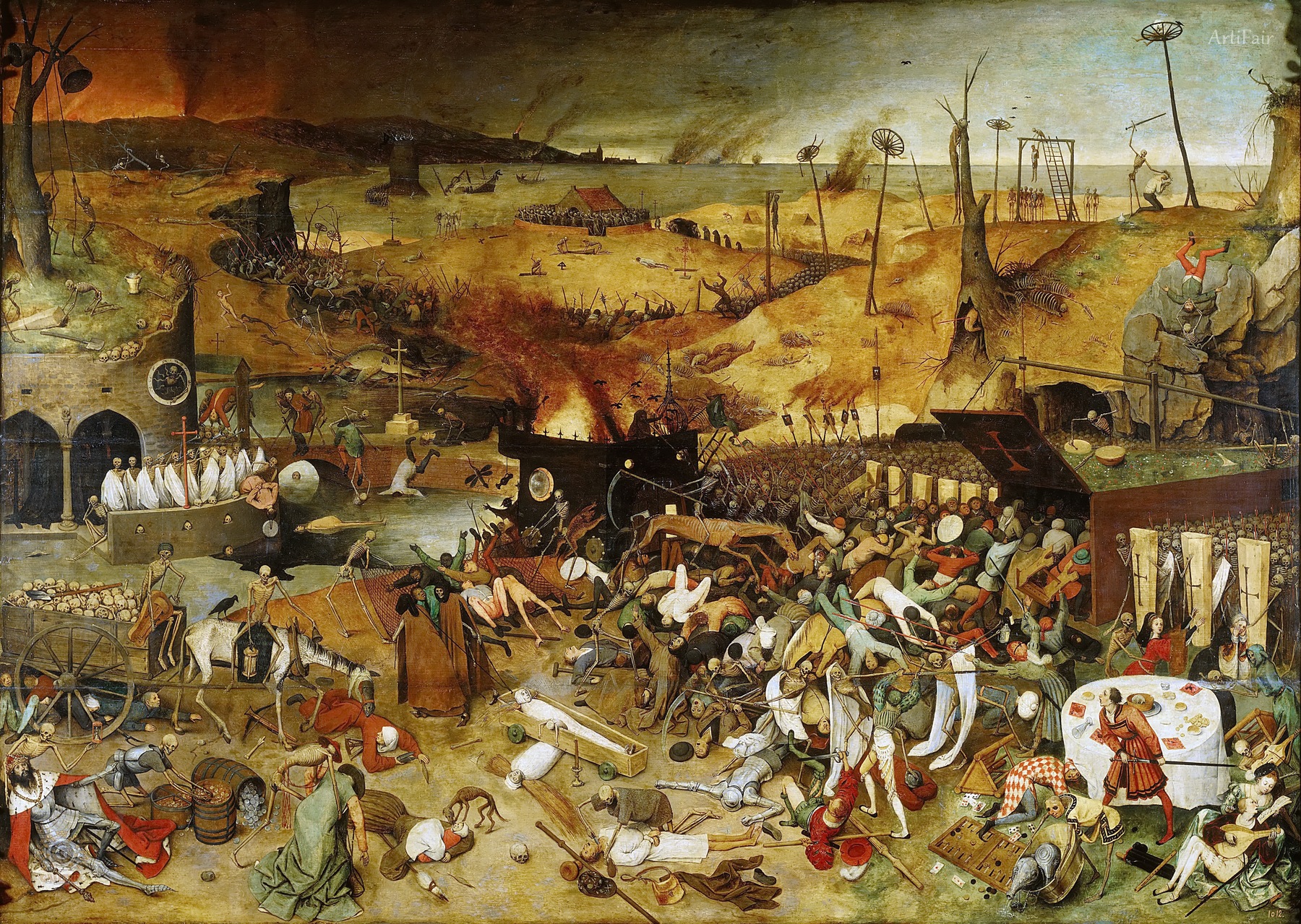
Art Appreciation
This striking scene bursts forth with chaos and despair, sprawling across a desolate landscape drenched in ominous, muted tones of brown, grey, and black. A harrowing depiction of death's dominance pervades every corner—skeletons armed for battle storm through the carnage, dragging victims in various stages of torment and demise. The composition is dense and frenetic, a wild tangle of human figures, horses, and skeletal harbingers, all intertwined in a macabre dance of destruction. The sky broods heavily overhead, casting a yellowish pall that timidly hints at a dying sun, while the horizon is littered with fires, smoke, and smoke-shrouded ships—symbols of ruin unleashed without quarter.
The artist’s meticulous brushwork lends a frigid precision to this apocalyptic vista. Every figure, weapon, and shattered remnant pulses with movement, as if caught mid-struggle between the living and the dead. The color palette, though subdued, is pierced by startling flashes of red—a reminder of bloodshed spilling unabated. The landscape itself fragments under the weight of death, barren trees skeletal and uplifted like torches, hanging bodies swinging as silent witnesses to the inevitable. Emotionally, the painting overwhelms with its sense of dread and the futility of resistance, resonating as a grim reflection on mortality during a turbulent era scarred by plague, war, and political instability. Artistic significance lies in its raw embodiment of human vulnerability and the unrelenting spread of death, revealing the Renaissance preoccupation with memento mori and the fragile nature of earthly life.